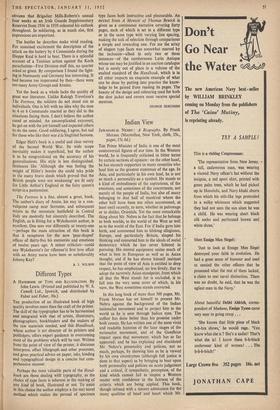Different Types
THE production of an illustrated book of high quality involves more than the craft of the printer. The skill of the typographer has to be harmonised and integrated with that of artists, illustrators, Photographers, bookbinders and the makers of the raw materials needed, and this ,Handbook, whose author is art director of its printers and publishers, offers expert guidance in overcoming most of the problems which will be met. Written from the point of view of the printer, it discusses letterpress, offset lithograph and other processes, and gives practical advice on paper, inks, binding and typographical design in a concise but com- prehensive manner.
Perhaps the most valuable parts of the Hand- book are those dealing with typography, as the choice of type faces is inherent in the making of any kind of book, illustrated or not. To assist in this choice the author employs a (to me) novel method which makes the perusal of specimen type faces both instructive and pleasurable. An extract from A Memoir of Thomas Bewick is given as a continuous narrative covering forty pages, each of which is set in a different type or in the same type with varying line spacing, making the task of selection through comparisons a simple and rewarding one. For me the array of elegant type faces was somewhat marred by the inclusion—albeit in only two or three instances—of the cumbersome Latin Antique whose use may be justified in an auction catalogue but is surely out of place in a volume of the exalted standard of the Handbook, which is in all other respects an exquisite example of what can be done by putting into practice the know- ledge to be gained from reading its pages. The beauty of the design and colouring used for both the dust jacket and covers must receive special mention.
GEORGE SERCOMBE


































 Previous page
Previous page